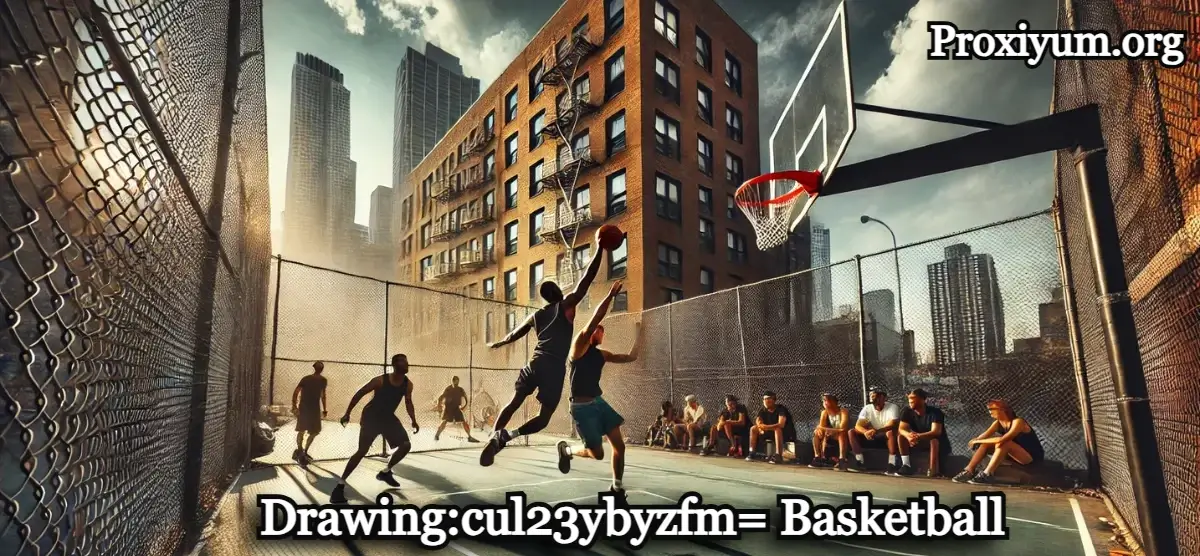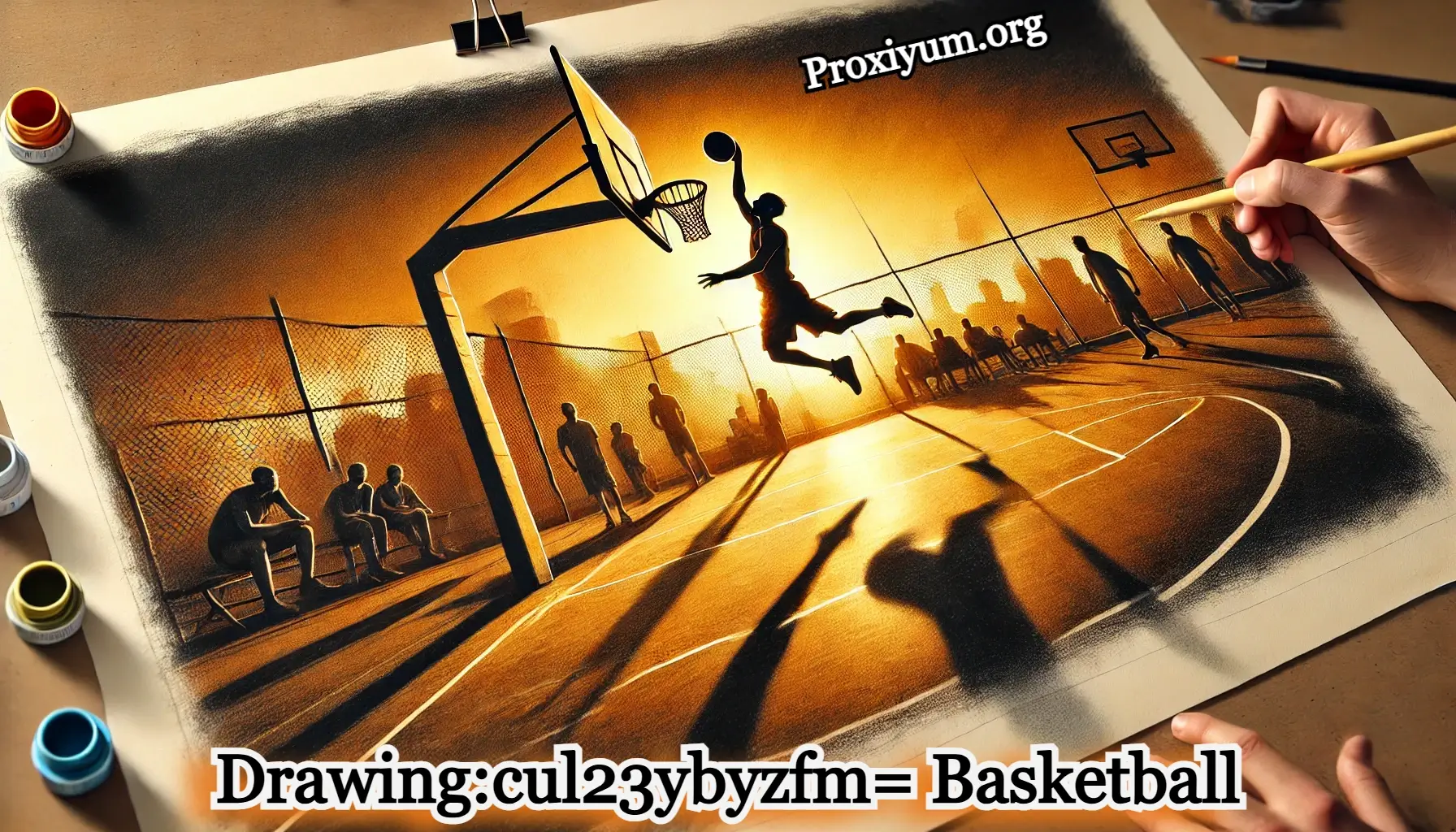Introduction:
Basketball is more than just a game; it’s an art form that comes alive on the court. And what better way to celebrate this dynamic sport than through drawing?
Whether you’re sketching your favorite player mid-dunk or capturing the intensity of a buzzer-beater, basketball drawing offers endless opportunities for creativity and expression. But honing those skills requires practice, technique, and a little bit of inspiration.
If you’re ready to take your artistic talents from dribbling to dunking on paper, let’s dive into some essential tips and guidance for mastering the world of basketball drawing!
The Importance of Practice in Basketball Drawing


Practice is the cornerstone of any artistic endeavor, and basketball drawing is no exception. Just as athletes refine their skills on the court, artists must commit to regular practice to enhance their technique.
The more you draw, the better you’ll understand movement, form, and proportions. Repeatedly sketching different angles of a jump shot or dribble can sharpen your eye for detail.
Setting aside time each day allows you to experiment with various styles and mediums. It’s also an opportunity to reflect on what works and what doesn’t in your art.
Don’t shy away from making mistakes during this process. Each error serves as a lesson that brings you closer to mastering the craft. Embrace every chance to pick up your pencil; after all, every stroke counts toward developing your unique voice in basketball illustration!
Basic Drawing Techniques for Beginners
Starting your journey in basketball drawing can be exciting yet daunting. Begin with simple shapes to outline the players and ball. Focus on circles, ovals, and rectangles to capture proportions.
Once you have the basic forms down, practice sketching light lines. This allows for adjustments without committing too quickly. Keep your wrist loose to maintain fluidity in your strokes.
Experiment with different pencil pressures as well; varying them can create depth and dimension. A soft touch offers fine details while a firmer grip adds boldness.
Don’t shy away from using reference images of basketball action shots or players in motion. Observing real-life poses aids in understanding anatomy and dynamics behind each movement.
Remember that practice is key—regularly dedicate time to these techniques, and watch your skills grow over time!
Tips for Developing Your Style
Finding your own style in basketball drawing is an exciting journey. Start by experimenting with different techniques and perspectives. Don’t be afraid to make mistakes; they’re all part of the process.
Study various artists, both famous and emerging. Analyze what resonates with you—colors, shapes, or even unique approaches to movement. Incorporate those elements into your work.
Practice regularly but also take breaks. Sometimes stepping away can lead to fresh ideas when you return. Keep a sketchbook handy for spontaneous thoughts or inspirations that strike at odd moments.
Try mixing mediums too! Watercolor might add fluidity while charcoal could bring depth to your drawings. The combination can help refine your personal expression.
Engage with other artists online or within local communities. Sharing experiences can spark new directions for your art and provide valuable insights as you develop your unique voice in basketball drawing.
Understanding Perspective and Proportions in Basketball Drawing


When drawing basketball scenes, understanding perspective is crucial. It allows your artwork to convey depth and dynamism. Begin by establishing a vanishing point on the horizon line. This creates a realistic backdrop for your players.
Proportions play an equally important role. A player’s height should relate accurately to the ball and surrounding elements. Use simple shapes as building blocks—ovals for heads, rectangles for bodies—to maintain proper scale.
Experiment with different angles too. A low viewpoint can emphasize action, while a bird’s-eye view captures the strategy of gameplay in full swing.
Remember that foreshortening adds excitement to your drawings. By adjusting proportions based on camera angle, you enhance visual impact significantly.
Each technique invites unique interpretations of movement and energy within basketball art. Always explore how perspective merges with proportion to elevate your pieces beyond basic depictions.
How to Incorporate Movement and Action into Your Drawings
Capturing movement in basketball drawings can bring your art to life. Start by studying action shots of players in motion. Notice the angles and body positions during jumps, dribbles, and passes.
Use dynamic lines to represent speed and energy. Arcs or swoops around limbs can suggest momentum while adding excitement to your work.
Try sketching with quick gestures first. This helps you focus on overall forms rather than fine details. Once satisfied with the flow, refine specific areas for clarity.
Consider incorporating multiple frames within a single piece. This technique showcases progression and adds depth to your artwork.
Don’t forget about facial expressions! They convey emotion and intensity, making the scene more compelling for viewers who appreciate that connection in sports drawing.
Utilizing Different Art Mediums for Basketball Drawings
Exploring various art mediums can elevate your basketball drawings to new heights. Each medium offers unique textures and effects, allowing you to express the sport’s energy in diverse ways.
Pencil sketches are perfect for capturing quick ideas or practicing fundamentals. They allow for easy adjustments as you refine your technique.
Ink can add bold lines, giving a dynamic feel to your artwork. Experimenting with both fine liners and brush pens will reveal different styles of expression.
For those looking to incorporate color, watercolors create a fluidity that mirrors the movement of players on the court. The blending techniques can evoke emotion and rhythm in your pieces.
Digital art is also gaining popularity among artists. It offers endless possibilities for layering and manipulating images without the mess associated with traditional media.
Don’t hesitate to mix mediums too! Combining pencil with watercolor creates stunning depth while adding a personal touch to each drawing.
Avoiding Common Mistakes in Basketball Drawing
When diving into basketball drawing, beginners often overlook key aspects. One major mistake is neglecting anatomy. Understanding the human body helps depict accurate movements and poses.
Another common pitfall is focusing too heavily on details before grasping the overall form. Start with simple shapes to construct your player’s figure first. Then, build upon that foundation with detailed features.
Proportions are critical in sports art as well. Be mindful of head size relative to the body. Distorted proportions can easily misrepresent action.
Avoid getting stuck in a single viewpoint; explore different angles for dynamic compositions. Don’t shy away from reference images—they’re invaluable for capturing movement and positioning accurately.
Mistakes are part of growth but being aware of these pitfalls can expedite your artistic journey significantly.
Inspiration from Famous Basketball Artists
Famous basketball artists have a unique ability to capture the essence of the game. Their work often evokes passion and energy, resonating with fans and players alike.
Take Charles Fazzino, for instance. His vibrant 3D artwork brings iconic moments from basketball history to life. Each piece tells a story that transcends time.
Another notable artist is Kadir Nelson, renowned for his striking portraits of athletes. Nelson’s attention to detail highlights not only the physicality but also the spirit of basketball players.
Street art has its champions too, like Kehinde Wiley. Known for his dynamic representations, he blends contemporary culture with traditional portraiture in unexpected ways.
These artists inspire countless aspiring creators to dive deeper into their craft through unique perspectives on basketball’s cultural impact and athletic grace. Embracing different styles allows every artist to find their voice within this expressive genre.
The Role of Critique and Feedback in Improving Your Skills


Receiving critique and feedback is a critical aspect of developing your skills in basketball drawing. It helps you see your work from different perspectives, revealing strengths and areas for improvement that you might not notice on your own.
Sharing your art with peers or joining online communities can provide valuable insights. When fellow artists offer constructive criticism, it encourages growth and pushes you to refine your techniques. Learn to embrace this feedback; view it as an opportunity rather than a setback.
It’s also important to be open-minded about the opinions of others while maintaining confidence in your unique style. Critique should inspire experimentation and lead you toward innovative approaches in your artwork.
Remember, even the most celebrated artists have relied on constructive feedback throughout their careers. By actively seeking out input on your basketball drawings, you’ll enhance both technical skills and creative expression over time.
This ongoing dialogue within the artistic community can transform how you approach each piece, ultimately elevating the quality of your work.
Conclusion
In conclusion, mastering basketball drawing requires a blend of practice, technique, and creative exploration.
Embrace the importance of refining your skills through regular practice while experimenting with different styles, mediums, and perspectives.
Incorporating movement and capturing dynamic action will elevate your artwork, making it more expressive and engaging.
Learn from feedback and take inspiration from renowned artists to continue growing and finding your unique voice.
Ultimately, basketball drawing is an exciting journey where every sketch brings you closer to capturing the spirit of the game.
